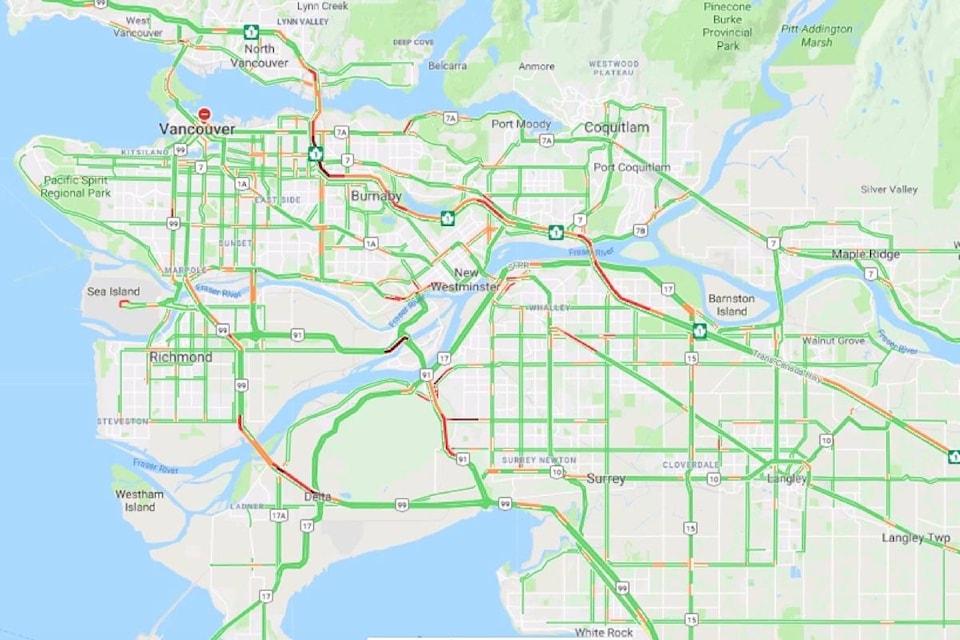An initiative by the Mayors’ Council, focused on determining how the public should pay for regional transit/transportation projects, suggests two forms of strategies to bill motorists using the Lower Mainland road network.
One of the suggestions drafted in the Independent Mobility Pricing Commission would be to bill motorists once they drive past a “congestion point.”
The other method would be distance-based charges, which would be determined based on the location and time of day that people were driving.
Although commission chairman Allan Seckel told Black Press at a technical briefing with reporters Monday that they did not have any congestion-point locations mapped out at this point in time, the 159-page report indicates several areas that are on the commission’s radar.
The report defines Surrey City Centre as one of Metro Vancouver’s worst congestion sites. Surrey was joined by the city centres in New Westminster, Metrotown and Richmond.
Through a “municipal elected official workshop” Nov. 17, the commission heard that “key congestion areas” in Surrey are at 32 Avenue and 152 Street; Highway 10 to Langley; bridge accesses and King George and 88 Avenue.
The areas listed in Surrey were among dozens of other “hot spots” throughout the region.
The report makes note of Surrey’s new light rail transit project, but states that even with “significant transportation investments, congestion is set to get worse over the next 30 years.”
Money raised through the new methods could help fund necessary transportation improvements like the new Massey Bridge and Pattullo replacement, the commission said.
Commission executive director Daniel Firth said they are focused on three key elements for any road pricing scheme: affordability, fairness and enough transportation options available so people can avoid the charges.
Seckel added that the charges would remain affordable enough that people could choose to incur them if that route was more convenient to them over a free one.
When asked how congestion point charges would differ from the bridge tolls taken off last fall, Firth said Metro Vancouver’s spread-out city centres could mean charge points in spots all around the region, not just at crossings. Seckel said the commission was planning to provide examples near the end of January.
Surrey Mayor Linda Hepner told Black Press it was too soon for her to judge if either charging method would be better than tolls.
Hepner noted that many of Surrey’s urban cores and main arterial routes were congested but said it was too early for her to say how congestion point charging might affect those.
She did muse on the possibility of distance-based charging by time and place potentially taking truckers off the road during rush hour.
The commission, set up by the mayors’ council on regional transportation last June, is made up of business, union, academic and community leaders.
